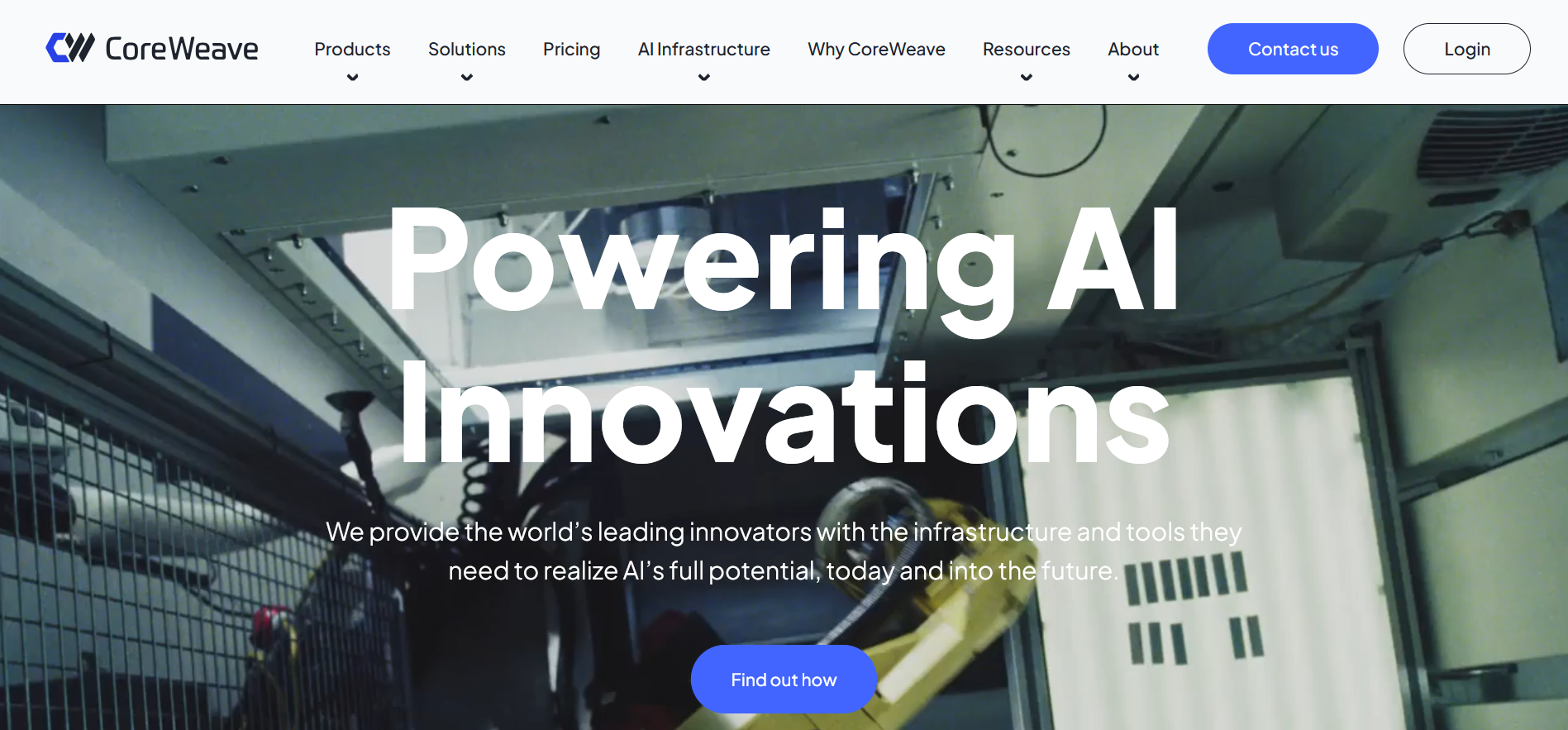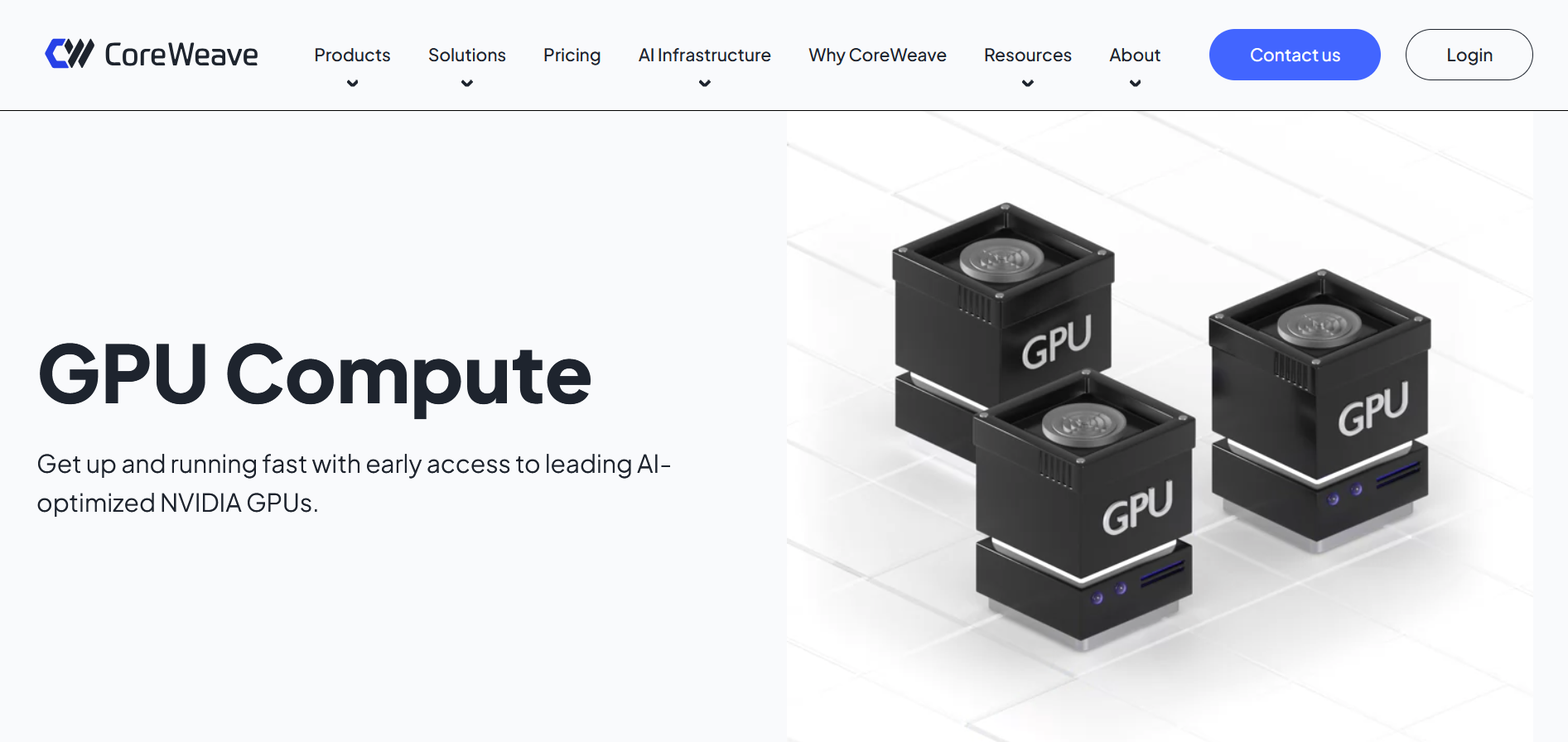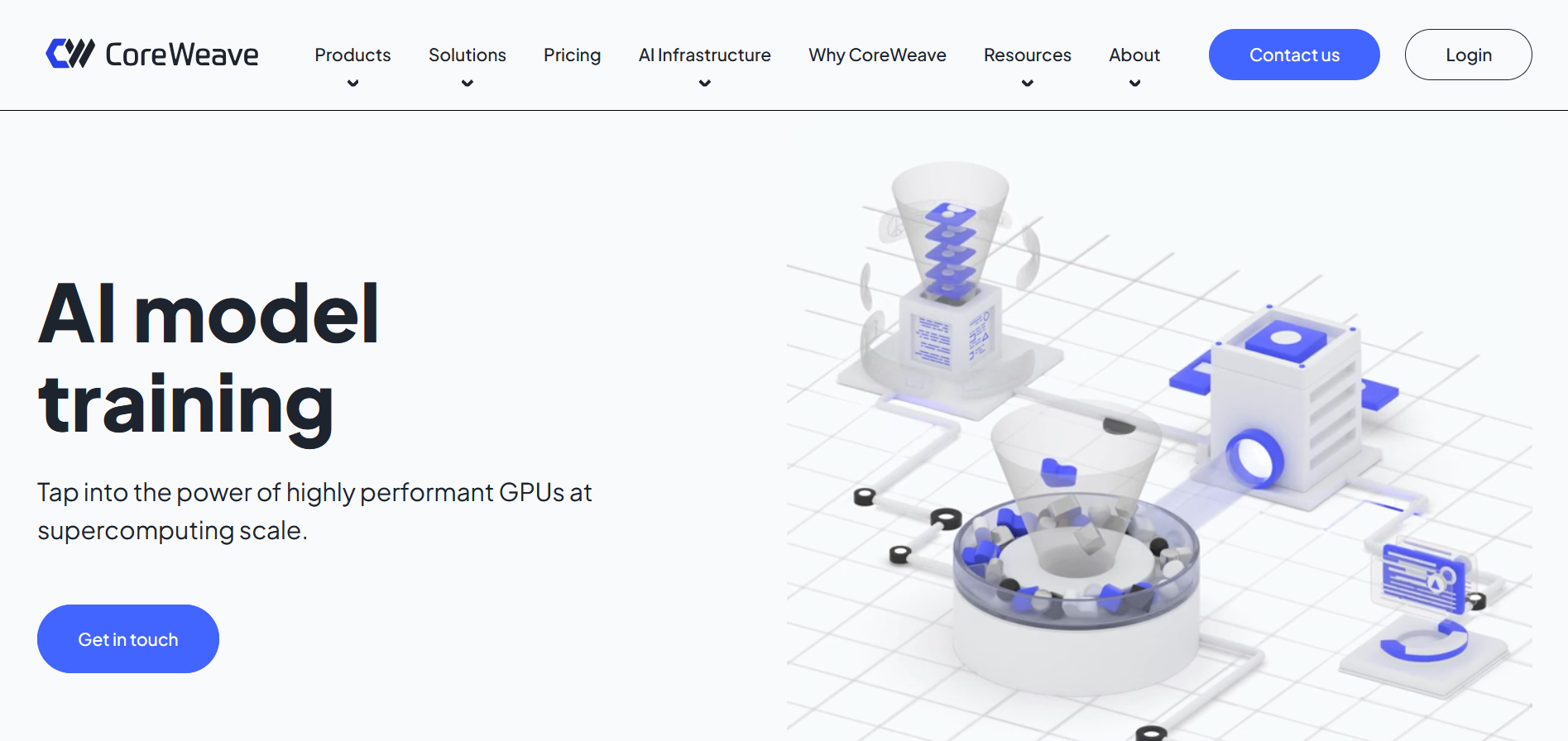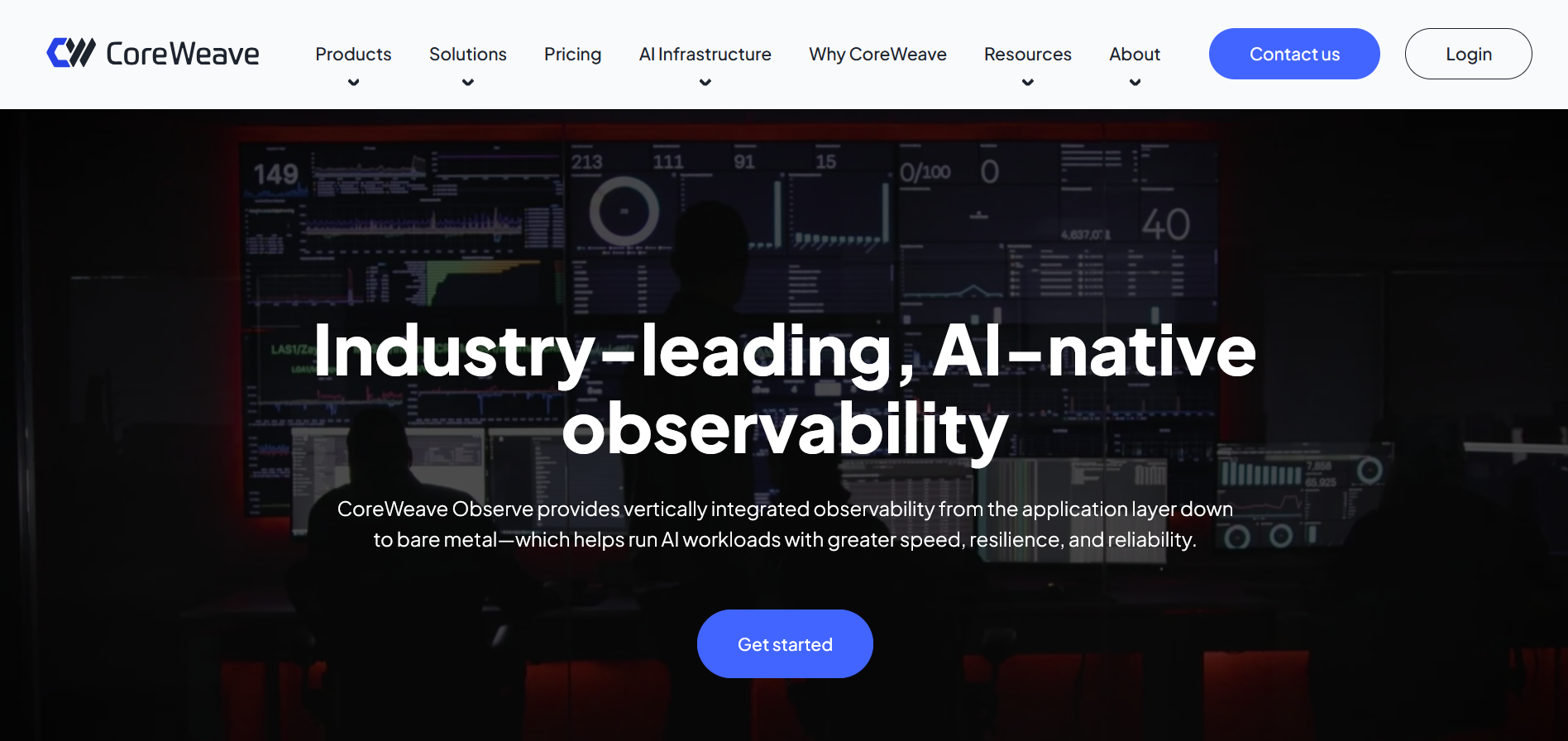The mass adoption and dissemination of AI technologies significantly accelerated the development of related services that support the rapid growth of this industry. CoreWeave is one such project. In just a few years, it has become a key provider of cloud GPU infrastructure for the largest AI companies. In our article, we will tell you about the CoreWeave technology stack, the areas of application of its products, and their advantages over competitors. You will also learn what cloud GPU is and why it is difficult to imagine the modern AI industry without this technology.
What Is CoreWeave and How Does It Work
CoreWeave is an American company that has made an impressive journey from a small crypto startup to a leading provider of cloud GPU resources for OpenAI, Microsoft, and other tech giants. Before we move on to assessing the company's activities, let's briefly explain what GPU computing is and why this technology is so important for progress in the field of AI. This will allow us to better understand the significance of CoreWeave.
Cloud GPUs are IaaS services that provide remote access to powerful graphics processors (video cards) for high-performance computing. Virtual servers with GPUs support parallel computing and multi-threaded processing. This allows them to be effectively used for training language models, analyzing big data, testing and deploying AI products, and other tasks.
In the past decade, graphics processors have been widely used in cryptocurrency mining. This is the specialization that three traders – Michael Intrator, Brian Venturo, and Brannin McBee – who chose for their startup. The trio named their venture Atlantic Crypto and began to buy powerful video cards actively, setting up mining farms in garages and warehouses.

Source: coreweave.com
In 2019, the cryptocurrency market crashed, forcing the Atlantic Crypto team to change their line of business. After buying tens of thousands of cheap GPUs, they renamed the company CoreWeave. The new brand began to position itself as a cloud provider for those in need of super-powerful video cards. The new direction quickly gained traction in 2022 after the appearance of the legendary chatbot ChatGPT from OpenAI. The beginning of the boom in artificial intelligence technologies caused a severe shortage of graphics processors, as developing AI services required them in huge volumes.
CoreWeave quickly adapted to the new trend. It was helped by its own data centers with impressive GPU capacities and a strong partnership with NVIDIA. Moreover, the well-known video card manufacturer became one of the startup's key investors, with a $100 million investment in 2023. Microsoft is also on the list of CoreWeave's top clients, renting significant GPU resources for its projects. The funds received from it amounted to 62% of the total CoreWeave revenue for 2024, which reached $1.92 billion. In March 2025, the startup signed a five-year contract with OpenAI to supply capacities for the development of AI infrastructure. The deal is worth approximately $12 billion.
- Automate the work with leads from the Facebook advertising account
- Empower with integrations and instant transfer of leads
- Don't spend money on developers or integrators
- Save time by automating routine tasks
CoreWeave's rapid growth is driven not only by the huge demand for GPUs, but also by how the company implements access to this power. The architecture of its solutions and technical approach deserve special attention. Behind the ease of use lies a complex system of distributed computing, designed with the needs of developers and the scalability of AI products in mind.
Core Features and Technology Stack
To understand what CoreWeave does, one must examine the technologies the company provides to its customers and the unique capabilities of these services. At the core of its offerings is the rental of high-performance GPUs for training and deploying AI models. It has a solid selection of NVIDIA’s top-end GPUs, ideally tailored for AI product development.
Meanwhile, the CoreWeave technology stack is not limited to cloud GPUs. In addition, the company's clients can get remote access to high-power NVIDIA Grace central processing units (CPUs), as well as the latest AMD and Intel chips. For the implementation of the most resource-intensive projects, virtual and physical servers are available with maximum capabilities for using GPUs, CPUs, storage, and network infrastructure.

The CoreWeave GPU hosting platform solutions include a number of innovative features that make the platform highly sought after by AI industry leaders. Key features include:
- The system provides a set of validation functions that check the overall health of the cluster, including GPU, CPU, network and storage. In addition, they are used to assess the functional readiness required to support large-scale workloads.
- Proactive health checks are automatically performed on inactive nodes, allowing potential hardware issues to be identified and replaced before they lead to critical failure.
- Managed Kubernetes clusters come with components fully configured. These include network and storage interfaces, GPU drivers, Slurm-on-Kubernetes, and observability plugins.
- CoreWeave megaclusters include resources from over 30 data centers in Europe and North America, housing over 300,000 high-performance GPUs. Its infrastructure is optimally suited for training and deploying advanced neural networks, including those with trillions of parameters, which represent the cutting edge of modern AI development.
- The system is equipped with advanced monitoring and analytics features. They collect detailed data on the operation of GPUs and other components of the technology stack in real time. In addition, it automatically restores equipment, which helps reduce downtime.
With such a strong technical foundation, CoreWeave successfully copes with tasks of any complexity in the field of artificial intelligence and high-performance computing. Let's consider how these solutions are applied in practice – in which industries they are most widely used and which use cases are becoming key for the company's clients.
Key Use Cases and Industries
A better understanding of how to use the cloud GPU comes from exploring real-world examples showcasing its capabilities. CoreWeave technologies are used in various industries – from artificial intelligence and big data to game development, finance, and cybersecurity. Below, we will consider the key areas where CoreWeave cloud GPUs bring the greatest practical benefit.

Development of AI/ML Models
Cloud GPUs support parallel computing and multi-threaded processing to deliver high performance for training and deploying AI models. AI models are trained on huge amounts of data, which requires computational resources to process. Cloud technologies significantly accelerate neural network training by providing access to scalable GPU resources on demand.
Applications of Generative AI for Business
CoreWeave technologies are in high demand among companies that use generative AI to create text, images, 3D modeling, customer service, etc. Rented GPU power allows them to significantly increase the speed and performance of business processes performed using neural networks.
Big Data Collection and Analysis
GPU cloud services play an important role in the field of big data processing and analysis, allowing for significantly accelerated resource-intensive calculations. Powerful graphics processors provide high performance when working with large and complex data sets, helping to extract valuable insights and identify trends and patterns.
Game Development and Video Production
Initially, graphics processors were designed to render high-resolution graphics at high frame rates. Today, virtual GPUs are actively used by computer game developers to simulate physics, optimize rendering, and other resource-intensive processes. In addition, their capabilities are highly valued in video production and the film industry, where they help create impressive visual effects and photorealistic animation.
Finance and Cybersecurity
Cloud GPUs from CoreWeave are highly effective in financial modeling and analytics. They enable companies to model risks, optimize financial portfolios, test strategies, and create algorithmic trading models much faster and more efficiently. Within the financial sector, these GPU resources also strengthen cybersecurity efforts by enabling real-time monitoring of large data volumes to promptly detect and respond to potential threats and fraudulent activities.
CoreWeave vs. Traditional Cloud Providers
Getting to know CoreWeave and understanding what GPU infrastructure is allows you to compare this specialized solution with traditional cloud providers – AWS, Google Cloud, and Azure. Due to its narrow specialization in GPU infrastructure, CoreWeave offers a number of advantages that distinguish it from general-purpose cloud platforms.

The virtual GPUs provided by CoreWeave outperform those of its competitors in several ways:
- The average deployment time of a CoreWeave container, based on the results of the tests, was 30–45 seconds, while it took 120–150 seconds for a traditional cloud. The results indicate that the performance of a specialized GPU solution is 3–5 times higher.
- The average transfer rate from compatible CoreWeave storage was 700 MB/s, while the same figure for CoreWeave's competitors did not exceed 72 MB/s. Moreover, for certain scenarios, its GPU infrastructure supports even higher speeds – up to 12 Gb/s.
- The average latency for autoscaling the ML model inference service was 45–70 seconds. For traditional services, this action took 270–390 seconds — at least 4–6 times longer.
- CoreWeave's technology stack is built on bare-metal infrastructure (serverless Kubernetes), while its competitors offer managed cloud infrastructure. This allows the GPU provider's customers to deploy and scale applications faster without having to set up the underlying structure.
- CoreWeave offers a robust selection of NVIDIA's ultra-powerful GPUs, including the latest models (like the H100 Tensor Core), ideal for heavy workloads in AI/ML training and deployment. It also offers dedicated Cloud Native Networking with NVIDIA Quantum InfiniBand, delivering up to 400 Gbps of throughput.
Conclusion
American company CoreWeave has taken a leading position in the cloud infrastructure market for GPU computing in just a few years. The solutions it provides are in high demand among AI industry giants, including OpenAI and Microsoft, which use its high-powered GPUs to train and deploy their AI/ML products. In addition, CoreWeave's cloud services are actively used in other areas, including the implementation of AI in business processes, big data processing, game development, video production, finance, and cybersecurity.
CoreWeave's dedicated GPU solutions are several times faster than traditional cloud providers in key areas: container deployment speed, data transfer speed from storage, latency when scaling a model, and more. This allows it to continue to strengthen its position as one of the leading GPU cloud service providers in the market.
Also read on our blog:
- Google Lead Form and Smartsheet Integration: Automatic Addition of Rows
- Perplexity AI: The AI-Powered Search Engine Revolutionizing Information Access
- Cursor AI Unleashed: The Agent-Powered Code Editor Transforming Developer Workflow
- Top 5 Data Visualization Tools
- How to Integrate TikTok and Notion: Step-by-Step Guide

